2023's Best Dynamic Microphone Recommendations - For Live & Recording
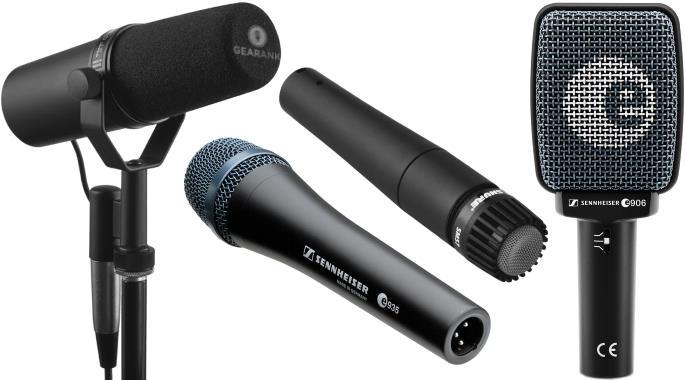
Author & Contributors
Raphael Pulgar
I've been an audio engineer for 20 years specializing in rock and metal recordings. I also play guitar and produce original music for my band and other content creators.
Rode PodMic
Cons
- Integrated pop filter not the best
- Low end a bit lacking
- A bit gain hungry
Pros
- Great sound and build quality for the price
- Easy to mix into music
- Good background rejection
- Secure mounting bracket
The PodMic, often dismissed as a mere streaming or podcasting microphone, is fundamentally a broadcast-quality mic designed to enhance the richness of voices. It draws parallels to the Shure SM7/SM7B, initially intended for broadcast but later making its mark on iconic records like "Thriller."
Equipped with an internal filter and Shock Mount, the PodMic ensures recordings are free from plosive disturbances. Despite being marketed primarily for podcasts and voiceovers, astute audio engineers have discovered its versatility. Beyond its labeled niche, the Rode PodMic proves to be a dynamic microphone of high quality, suitable for various applications, including singing and intense vocal performances. It's a hidden gem for metal producers on a budget.
On the positive side, the PodMic competes admirably with the revered SM7B in controlled speaking scenarios, boasting a solid sound profile. It excels in tracking vocals and serves as an excellent streaming mic, offering a well-balanced tone and a full, non-obtrusive proximity effect. Its robust build includes an impressive noise gate and the convenience of mounting on an affordable boom arm without sag.
However, some drawbacks exist. The integrated pop filter leaves much to be desired. While the PodMic delivers a balanced tone, the low end might be considered a bit weak compared to other broadcast mics. Additionally, its relatively quiet output may necessitate a better audio interface for optimal performance.
Specifications
- Type: Dynamic
- Polar Pattern: Cardioid
- Frequency Response: 40Hz-15kHz
- Impedance: 320 ohms
- Applications: Applications: speech applications (podcasting and gaming), singing
| Website | Source | *Rating Value |
| Podcast Insights | Ross Winn | 96/100 |
Shure SM57
Cons
- Not for delicate sounding sources
- Needs foam filter to avoid vocal plosives
Pros
- Extremely versatile
- Wide frequency response for various sources
- Amazing long term durability and ruggedness
- High SPL handling
The SM57 is a popular dynamic microphone that is able to record almost anything in the studio, save for the most quiet sound sources that require absolute detail. It excels in handling electric guitar, drums and aggressive screamed vocals (with a pop filter or foam windscreen).
My personal favorite use case scenarios for the SM57 includes electric guitar cabs and screamed vocals. Guitar amplifiers, especially tube amps, sound best when played at higher volumes. With the SM57 I am able to crank guitar amps to get the saturation I need without worrying that the mic would overload or distort. Same goes for screamed vocals.

The diaphragm of the SM57 is encased in a hard-wearing plastic head with a metal grille.
It's the first mic engineers reach for when they want to mic up a snare. I've used my personal one to mic up live snares countless times over the years and it's always predictable and consistent. It's one of the mics that you learn proper mic technique with because of its consistency. Want more ring? angle the edge of the snare. Want more of the snap? aim for the center with the mic 2 inches above the outer rim. It's a great learning tool to get great drum sounds and a good baseline for mic selection even when you expand your mic locker.
What I don't like about the SM57 is how hit or miss it is with sung vocals. Some singers sound great on it without much work while others sound brittle. It's this single inconsistency that I find makes me reach for a good condenser microphone. Another is that it's not the best mic for spoken word or podcasts. That task is better suited to the Shure SM7b which has a bit more detail and low end extension. But at nearly 4 times the price, the SM7b is only marginally better than the 57 in a lot of other aspects.
EVERY studio has to have at least one SM57. Its versatility is unmatched and is one of, if not the best microphones to record electric guitar and screamed vocals. While it might not get you the detail of a good cardioid condenser microphone, energetic rock singers sound great on it.
I've recorded some samples to demonstrate the SM57 which you can listen to in my extended SM57 review.
Specifications
- Type: Dynamic
- Polar Pattern: Cardioid
- Frequency Response: 40Hz-15kHz
- Impedance: 150 ohms (300 ohms actual)
- Applications: Live and recorded guitars, guitar amps, vocals, drums & more
| Website | Source | *Rating Value |
| Gearspace | Sunscape | 85/100 |
| Gearank | Raphael Pulgar | 96/100 |
Shure SM57 Frequency Response Chart:

Shure SM57 Polar Pattern Chart:
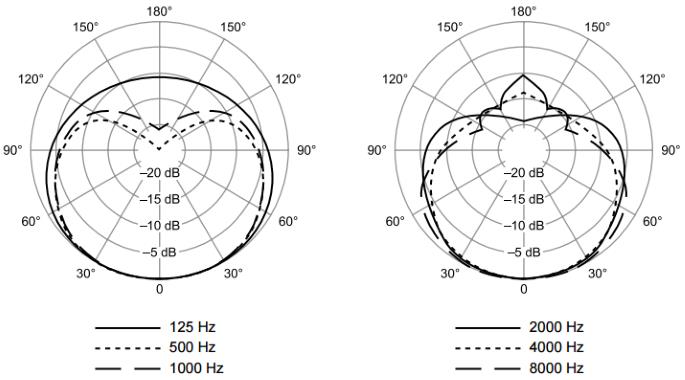
Shure Beta 56A
Cons
- May be difficult to mount
- Knob used for tightening the mount may become loose over time
Pros
- Compact design excellent choice for tricky mic positions
- Great at rejecting bleed
- Top notch build quality
The Shure Beta 56A emerges as a dedicated microphone tailored for close-miking applications, specifically targeting snare and tom drums in both live and studio settings. Its robust feature set includes a shock mount for sound isolation, a dynamic locking stand adapter for a streamlined setup, and a durable steel mesh grille. The neodymium magnet ensures a high signal-to-noise ratio, contributing to the microphone's premium performance.
Crafted with a uniform supercardioid pattern, the Beta 56A delivers high gain before feedback and impeccable rejection of off-axis sound. This makes it an optimal choice for capturing the intricate nuances of snare drums and toms. Beyond drum applications, the microphone proves versatile, lending its capabilities to instruments such as guitar and bass amps, brass instruments, and saxophones.
While the Beta 56A exhibits enhanced clarity on the top end, surpassing standard models like the 58, its quieter output than condenser mics requires a preamp with enough gain for an optimal signal-to-noise ratio. The engineered frequency response curve, tailored for live performances, may require EQ adjustments for a more natural sound in recording scenarios. Despite these considerations, the microphone's capacity for effective sound isolation makes it a valuable asset for producing high-quality recordings in diverse environments. It is good at reducing unwanted background noise.
The Shure Beta 56A is a reliable and adaptable microphone, meeting the demands of drum-focused applications while demonstrating versatility across various instruments. Musicians seeking precision, durability, and flexibility in their audio recordings will find the Beta 56A a commendable addition to their toolkit, offering professional-grade performance focusing on close-miking excellence.
Specifications
- Type: Dynamic
- Polar Pattern: Cardioid
- Frequency Response: 50Hz-16kHz
- Impedance: 150 ohms
- Applications: Vocals, Instruments (toms, snare drum, guitar & bass amplifiers, brass and woodwinds)
Shure Beta 58A
Cons
- Needs a bit of gain to reach optimal levels
- Frequency response better for live than studio use
Pros
- Excellent feedback resistance
- Amazing vocal mic
- Great dynamic range and headroom
Derived from the renowned SM58, Shure presents the Beta 58A, a handheld dynamic microphone meticulously crafted for vocal performances. Unlike its versatile predecessor, the Beta 58A strategically hones in on optimizing vocal capture. Shure achieves this specialization by amplifying the emphasis on higher frequencies at 4kHz and 9kHz, resulting in a clearer and more tailored sound, particularly well-suited for singers.
To enhance the microphone's vocal-centric capabilities, Shure incorporates a bass roll-off to mitigate the proximity effect. This feature ensures that there's no abrupt surge in lower frequencies when the microphone is brought closer to the source, maintaining a consistent and controlled audio response. This is an interesting feature that makes it more viable than condenser microphones in certain situations.
Further refining its design for vocal applications, the Beta 58A adopts a narrower Super Cardioid polar pattern. This intentional narrowing enhances noise rejection, minimizing interference from ambient sounds and focusing the microphone's sensitivity on the intended vocal source. Additionally, the inclusion of an internal shock mount (shock mounted capsule) serves to prevent handling noise, further solidifying the Beta 58A as a purpose-built microphone for capturing vocals with precision and clarity.
Specifications
- Type: Dynamic
- Polar Pattern: Supercardioid
- Frequency Response: 50Hz-16kHz
- Impedance: 150 ohms
- Applications: vocals, guitar and bass amplifiers
| Website | Source | *Rating Value |
| Gearspace | Tube World | 90/100 |
| Audiofanzine | BeyondR | 100/100 |
| Equipboard | lwf | 100/100 |
Shure Beta 58A Frequency Response Chart:
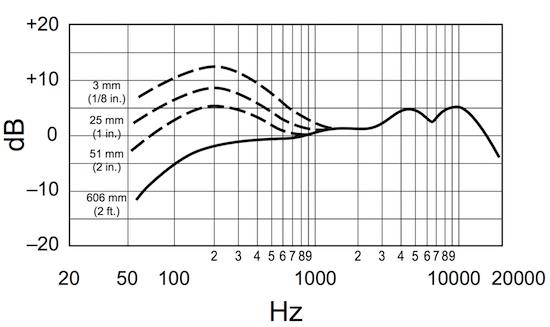
Shure Beta 58A Polar Pattern Chart:

Sennheiser e906
Cons
- Limited to side address use
- Not suitable for vocals
Pros
- Good high SPL handling
- Great for miking guitar cabinets.
- Consistent and repeatable sound.
- Side address design makes it easier to setup
- Solid build quality
The Sennheiser e906 is an instrument mic with side address, designed to lay flat on the grille cloth of guitar amps. It has gained popularity over the years as a guitar cab mic, an alternative to using a mic on a stand.
Its side address design allows for easier setup, and consistent placement both in live and in the studio. This consistent setup means repeatable results, which is especially important in recording.
Being an instrument mic, it is capable of handling high sound pressure levels, so it can be used for loud instruments, including the spiky transient sounds of drum shells.
For miking up guitar cabs and drum shells, the e906 deserves a spot in your microphone cabinet. It's a consistent performer that will last you for years.
If you're looking for a Sennheiser dynamic mic for vocals, then check out the Sennheiser MD 421-II .
Specifications
- Type: Dynamic
- Polar Pattern: Supercardioid
- Frequency Response: 40Hz-18kHz
- Impedance: 350 ohms
- Applications: Live and recorded guitar amps, vocals, kick drums and other high-SPL sound sources
| Website | Source | *Rating Value |
| Guitar Interactive | Editor | 94/100 |
| Gearspace | James Meeker | 80/100 |
| Audiofanzine | Mattfig | 100/100 |
Sennheiser e906 Frequency Response and Polar Pattern Chart:
Shure MV7
Cons
- Stock windscreen doesn't prevent all plosives
- USB connector a bit flimsy
Pros
- Very versatile
- Level meter helps you set optimal gain
- Plug and Play
- Great Bundled Software
The Shure MV7 is a versatile and dependable microphone that is perfect for podcasters who want to achieve professional-quality sound in any recording setup. It is one of the most sought after USB mics for broadcast use, based on the highly-regarded Shure SM7B and provides accurate and high-quality vocal reproduction, making it an ideal choice for podcasting. The MV7 is compatible with different setups, including audio interfaces, field recorders, mixers, and USB-connected computers, and it also works with select Android and iOS devices, making it perfect for different recording environments.
The MV7's unidirectional cardioid polar pattern and built-in pop filter effectively reduce room noise and plosives, making the editing process smoother. The microphone's sturdy all-metal construction and ready-to-mount yoke ensure reliability even in critical scenarios. The integrated touch-panel interface allows for intuitive control over levels, headphone volumes, monitor mix, and microphone mute, providing users with an easy-to-use experience.
However, the MV7 does have some limitations that users should be aware of. The stock windscreen is not particularly effective against plosive issues, which may require users to find alternative solutions. In addition, some users have reported concerns about the durability of the USB-C wire, with some instances of disconnection from the chip inside the microphone over time. But it does work well when paired with a compatible recording device.
Despite these limitations, the Shure MV7 is a plug-and-play microphone that offers broadcast-quality specifications. It is an excellent choice for podcasters and content creators who want a reliable, user-friendly solution for high-quality recordings.
Specifications
- Type: Dynamic
- Polar Pattern: Cardioid
- Frequency Response: 50Hz-16kHz
- Impedance: 150 ohms (300 ohms actual)
- Applications: Speech applications (podcasting and gaming), voice recording, instruments
| Website | Source | *Rating Value |
| Musicradar | Chris Corfield | 100/100 |
Shure SM7B
Cons
- Needs preamp with 60dB of gain
- Too boomy for conventional vocal use
Pros
- Great instrument/amp mic
- Similar to SM57 but with more low-end
- Ideal for aggressive/scream vocal styles
- Super durable and reliable
Much has been said about this high end dynamic microphone. And this is expected given its legendary status as one of the holy grails of dynamic mics. Originally designed for broadcasting, the SM7 series was quickly adopted by recording studios for musical use, especially for vocals.
The "B" variant is the latest of this line, having additional low frequency achieved through careful tuning of an augmented SM57 capsule, and integrating the shock mount, filter and enclosure into the design, which is called air suspension shock isolation.
This one has frequency response that work great with aggressive, shouted and screamed vocals, resulting tracks fitting in the mix exceptionally well. These types of vocals are hard to capture using conventional mics that focus on clarity. It is also a good mic for instruments and guitar amps, behaving like the iconic SM57. It is a mic that is meant to capture sound with more bottom end.
The mic requires an audio interface or preamp that can provide at least 60dB of gain, otherwise the mic can be too quiet. The Cloudlifter is perfect for the job.
There is no reason not to own an SM7B if it's within your budget. It's one of the best mics in the market today for vocals, and it will last you a lifetime. Just make sure your existing XLR Cable and gear is up to spec with the gain requirement.
The SM7B has a sibling called SM7dB Broadcast Mic, which comes with a built-in active preamp for better audio electrical signal management. It is part of a group of active dynamic mics that are used for broadcast, Podcast, and similar applications.
Specifications
- Type: Dynamic
- Polar Pattern: Cardioid
- Frequency Response: 50Hz to 20,000 Hz
- Impedance: 150 ohms
- Bass roll-off control
- Mid-range emphasis / Presence boost control
- Applications: Studio Vocals and Voice overs, Electric Guitar
| Website | Source | *Rating Value |
| Gearspace | Zarkov | 90/100 |
| Audiofanzine | MatrixClaw | 80/100 |
Shure SM7B Frequency Response Chart:
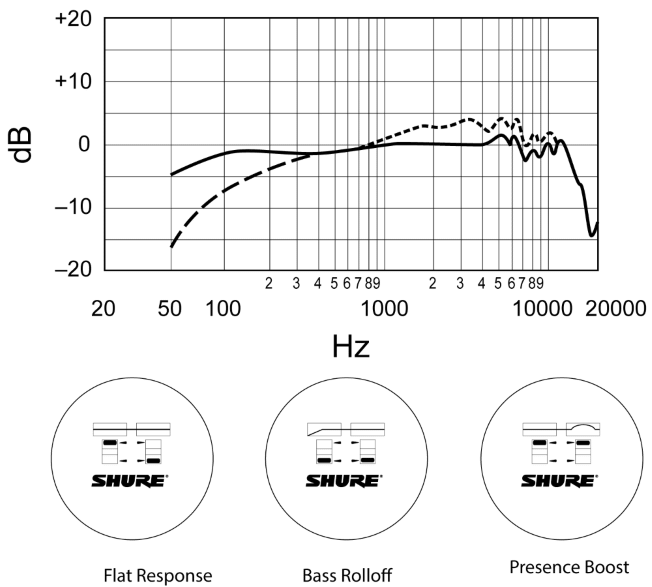
Budget Option
Peavey PVi 2
Cons
- Bass is a bit boomy
Pros
- Familiar handheld mic response
- Good off-axis rejection for the price
- With On/Off switch
- Solid build and durable
Microphones aren't usually the first thing to come to mind when mentioning Peavey as they're more known for their amplifiers, powered speakers and mixers.
The Peavey PVi 2 is an affordable dynamic microphone that, like most affordable mics, takes influence from the Shure SM58. And for the price, it is doing quite a good job, having similar response, sound quality and off-axis rejection, tight cardioid pattern, as more expensive mics.
It also shares the same downside, which is boomy bass, which is especially obvious when miking up close due to proximity effect.
It has no extra features aside from an on/off switch, but it does provide all the essential functions and quality at a very accessible price point.
In addition to good sound quality, this vocal microphone also sports a rugged build that ensures long term durability.
Its price to quality ratio makes it a great first mic, and it can also be a good option for those who need budget-friendly backup mics.
Specifications
- Type: Dynamic
- Polar Pattern: Cardioid
- Frequency Response: 45Hz-18kHz
- Impedance: 150 ohms
- Applications: Studio Vocals and Voice overs, Electric Guitar
Things to Consider When Buying a Dynamic Mic
- Polar Patterns describe the way a mic rejects or listens in to sound. The Cardioid polar pattern is the most popular for dynamic mics because it blocks sound waves that come from the back and sides (monitors, stage noise, instruments etc), while accepting the sounds directly in front of the capsule. Other variations include Cardioid polar pattern include the super cardioid and hyper cardioid polar pattern, both of which have a more front focused pattern, for even more noise rejection, the downside of which is restricted positioning.
- Think of frequency response as a default non-adjustable EQ that's built into a microphone. Ideally, we want it to as transparent and flat frequency response as it gets, but this is never the case, given the various hardware components that mics have. Engineers and musicians take advantage of these frequency response variances by pairing mics with the right vocal timber or instrument tone. For example, you don't want to pair a high pitched voice with a mic that emphasizes the highs, rather, you want a mic with a bit more low end to complement the sound source. If you are unsure, the best course of action is to look at the mics used by your favorite singers and instrumentalists and start from there. Remembering mic placement is important if you want to have consistent frequency response every time you setup the mic. So you ought to have a veriety of mic stands and mic clip sets.
-
Most dynamic mics come in the familiar handheld form factor and are meant for singers and the speaking voice. They also don't need phantom power to operate. But since dynamic mics have capsules that can handle high SPL (sound pressure level), they can be used to mic virtually any sound source, with the right mic position. Dynamic mics are popularly used on loud instruments like guitar speaker cabinets, kick drum, and other percussion instruments. Still, there are more specialized mics that can do better, but it is nice to know that dynamic mics are flexible when needed, albeit with some compromise on sound quality.
When it comes to vocal applications, it is good know the discussions surrounding the Dynamic vs Condenser Mic topic.
-
The proximity effect describes the increase in low frequencies when you get close to a microphone. Ideally, we don't want any increase in frequencies, but there are some who have put the proximity effect to good use, more notably rock singers and rappers who are looking to add more low-end oomph to their voice. These days, some mics are built with minimal proximity effect, while others are well loved for their proximity effect. This has prompted some manufacturers to clearly supply tone variation lines in their frequency charts when close to the mic, so that users will have an idea what to expect.
-
This specification points to the maximum volume in dB (Decibels) that a microphone can handle without introducing distortion. And since volume varies per frequency (example: louder at lower frequencies or vice versa), this specification usually has an @ frequency label, so it can get complicated.
Thankfully, you don't have to worry much about this because most dynamic microphones don't have built-in electronics to overload, they are limited by the mechanical movement of the diaphragm. This allows them to handle anywhere from 150dB to 180dB, which are extreme levels (loud volumes) you will not encounter in normal conditions. If you do encounter distortion, the problem could be that the mic is clipping the preamp which you are plugged into, and the solution is simple, up the levels of the preamp, or get a better mic preamp, or move further a way to lower the volume levels.
Some vocal mics have a hum compensating coil which helps reduce electrical hum and electromagnetic interference.
This ability to handle high SPL is the reason why dynamic mics are in demand. Most Wireless Microphones are actually dynamic capsule mics.
-
Many professional handheld microphones don't have an On/Off switch to prevent accidental turn offs. This way, mics are muted at the PA System mixer. Still there are some who prefer to have this extra control, which can be useful for smaller events where you have to leave the mic often.
Cardioid Polar Pattern
Frequency Response
Applications
Proximity Effect
Max SPL (Sound Pressure Level)
On/Off Switch
Best Dynamic Microphone Selection Methodology
The first edition was published in 2018 and the latest edition was published on Nov 15, 2021.
Our main criterion for this guide includes dynamic microphones that are meant for music, be it for singing or for miking instruments, and are readily available from major US music equipment retailers. Even with these limitations, we ended up with a shortlist of 99 dynamic mics, along with relevant reviews and ratings that totaled to over 132,000 sources. All of these were fed to the Gearank Algorithm, which in turn gave us rating scores our of 100 that reflect actual market sentiment. These are the scores that we used to rank the mics, the highest rated of which are featured above. For more information about our methods see How Gearank Works.
About the Author and Contributors
Here are the key people and sources involved in this guide's production - click on linked names for information about their music industry backgrounds.
Lead Author & Researcher
Raphael Pulgar
I've been an audio engineer for 20 years specializing in rock and metal recordings. I also play guitar and produce original music for my band and other content creators.
Some of the recording gear I use in my studio includes the Focusrite Scarlett 18i20, Focusrite Scarlett Solo, Samson QH4 Headphone Amp and Cloudlifter CL-1. My mics include Aston Origin, Aston Element, Shure SM57, Rode NT1, Rode PodMic, MXL V67G and more as mentioned above.
Contributors
Alexander Briones: Supplemental writing.
Jason Horton: Editing and Illustrating.
Media
Main/Top Image: Created by Gearank.com using photographs of the Shure SM7B, Sennheiser e935, Shure SM57 and Sennheiser e906.
The individual product images, frequency response charts and polar pattern charts were sourced from their respective manufacturers' websites, promotional materials or supporting documentation.



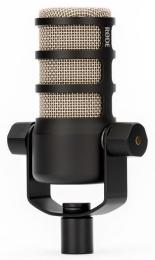

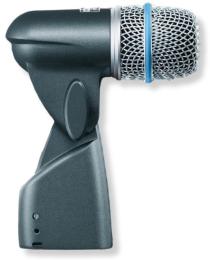
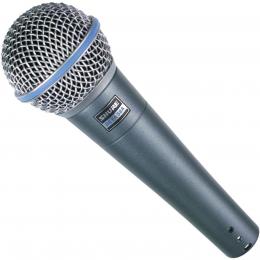
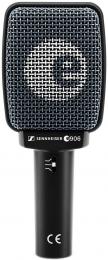
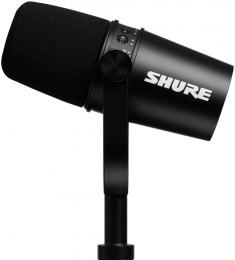
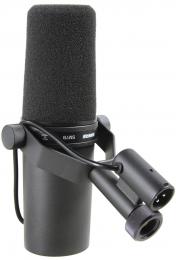
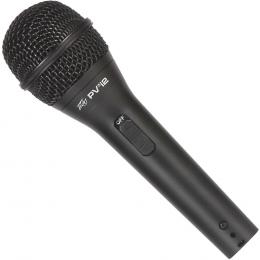
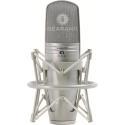
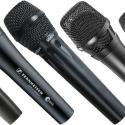
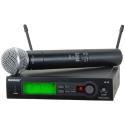
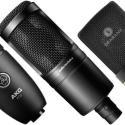
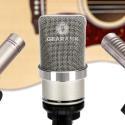

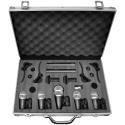
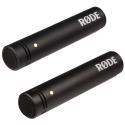
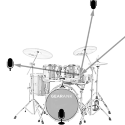






Comments
For the November 2023 Edition
Submitted by Alexander Briones on
For the November 2023 Edition of this guide, these mics came off the recommended list above due to being out-ranked.
Electro Voice RE20 Dynamic Microphone
Sennheiser e935 Dynamic Microphone
Sennheiser e945 Dynamic Microphone
As part of publishing the
Submitted by Jason Horton on
As part of publishing the July 2022 Edition, the Shure Beta 58A came off the recommended list above due to being out-ranked by other mics.
Publication of our May 2021
Submitted by Jason Horton on
Publication of our May 2021 Edition resulted in the following mics coming off the recommended list above, but you can still see our analysis of them:
Is there an SPL rating in the
Submitted by Eli (not verified) on
Is there an SPL rating in the e945? Many manufactures offer this, but I cant find it on the sennheiser and I need something that wont clip.
It's a dynamic microphone, so
Submitted by x Hades Stamps (not verified) on
It's a dynamic microphone, so clipping should never be an issue. Hasn't ever been on my Senn.
I need a microphone to use to
Submitted by Linda (not verified) on
I need a microphone to use to give a speech and then pass on to others who might want to say something. I would like one with a 5 start rating, but not too expensive. The room might have 75 people in it and instead of talking loudly, I would like to use a microphone. It is for a Salute to Reuben, my husband who recently died. This is for a get together of friends, relatives, etc. After eating, is when the speaking will take place. It might only last a few minutes if no one wants to speak. Can you help me?
Try an Audix F50. A great c
Submitted by Larry Hinze (not verified) on
Try an Audix F50. A great c
heap dynamic microphone. Used 20 or 30 bucks!
There aren't any good
Submitted by Jason Horton on
There aren't any good microphones with a perfect 5 star rating, however the GLS Audio ES-58-S will to the job nicely.
If you a hiring a PA System (sound mixer & speakers) or if the venue is providing one, suitable microphones are usually included so you might not need to buy one.
need recommendation for
Submitted by Tracy (not verified) on
Need a recommendation for microphone for a high-harmony singer w/ occasional lead parts...does not like to "eat" the mic and voice is not loud (aka...doesn't project if that's the correct term)
Hi Tracy,
Submitted by Raphael Pulgar on
Hi Tracy,
My pick would be the Shure Beta 58A for its tight pickup pattern and clarity in the 5khz range. I do however suggest practicing proper mic technique since singing too far away from any microphone will introduce problems with mixing as the engineer will have to increase the input gain to get a stronger signal. Higher input gain will also make the microphone more sensitive to ambient sounds and eventually, feedback. Take advantage of the proximity effect (bass increase when singing closer to the mic) to thicken a voice from a singer with less than optimal projection. "Eating" the mic is also a sign of bad technique and I'm glad your singer doesn't do that but they shouldn't be afraid of getting up close. The Beta 58A doesn't get boomy from using the mic closer to the mouth so they can be confident with their tonality through the FOH.